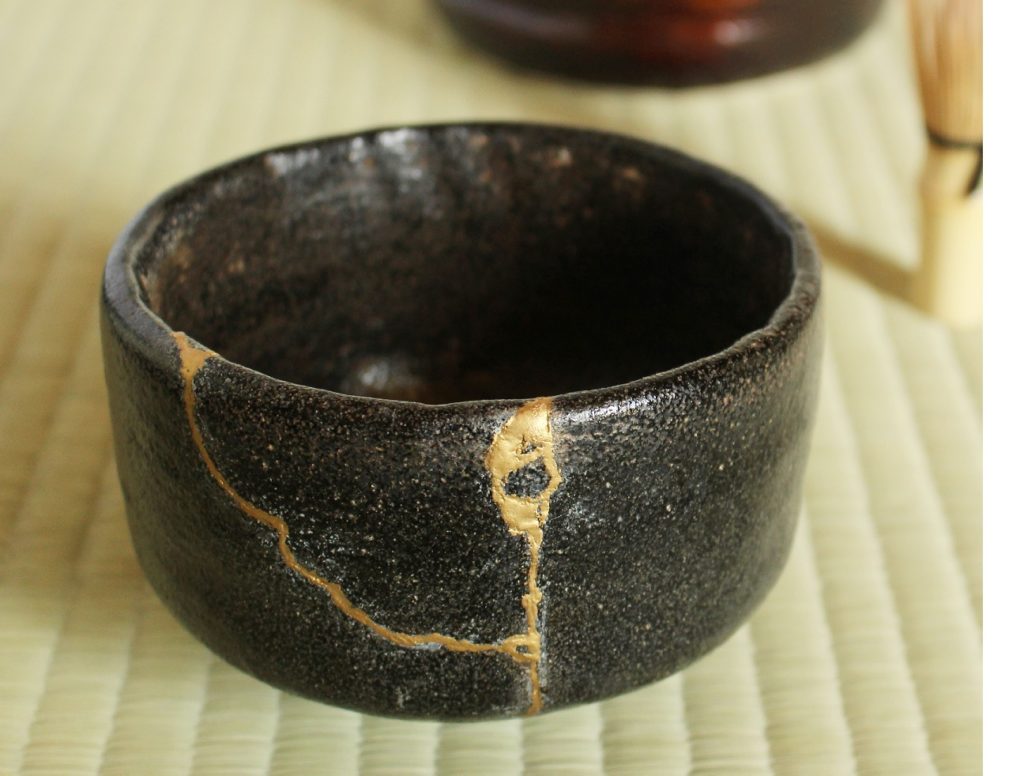“In the last three years,” Jennifer Johnson explains, “I’ve been married, divorced, lost both legs, been on life support three times, and been in hospice once.”
She says it with disarming good cheer, as if she’s listing the cities she visited on her vacation rather than recounting the series of crises that nearly killed her. But picking up the pieces is what Johnson is all about. A bilateral above-knee amputee (BAKA) since 2018, she’s preparing to learn the ancient Japanese art of kintsugi, in which shattered pottery gets repaired with gold, silver, or platinum lacquer.

that perfect us
“In kintsugi, you appreciate the breaks [in the ceramic],” she says. “You come to love the breaks. You see their value, and you make them beautiful. The repairs are what actually create the beauty.”
“That’s what we go through as amputees,” she adds. “We repair the damage and we make it part of our story.”
Johnson lost her limbs as a result of antiphospholipid syndrome (APLS), an autoimmune condition that causes runaway clotting. She also suffers from Sjogren’s syndrome, another autoimmune disorder that’s typically not serious but in rare cases (including Johnson’s) can attack vital organs such as the lungs, liver, and kidneys. The combination brought her close enough to death at one point that her adult children were hurriedly flown in to say goodbye.
To everyone’s surprise, she ended up getting sent home from hospice. Not many people get to have that kind of experience, but it didn’t exactly fill Johnson with joy at first. She spent several months in a “woe is me” phase (her words), rarely venturing out of her wheelchair and not deeply engaged with the future.
That all changed at the 2019 Hanger EmpowerFest, where she discovered yoga and meditation.
“That was a defining moment for me,” she says. “The instructor did this pose, and as I watched her I was just thinking, ‘Not gonna happen.’ Then I turned my head, and Matthew”—Johnson’s EmpowerFest sponsor, also a BAKA—“was sitting on my right, doing the pose perfectly.”
That’s when Johnson realized she could no longer get away with the excuses she’d been making. “The only reason I thought I couldn’t do the pose was because I gave myself the impression I could not,” she says, “and I allowed myself to believe it.”
“It took me losing both legs to finally feel comfortable in my own skin.”
Johnson views kintsugi as a way to help other amputees discover that same comfort zone in themselves. Because of her high susceptibility to COVID-19, she’ll initially study online with Iku Nishikawa, a London-based master who teaches throughout Europe. Eventually Johnson hopes to get in-person instruction in New York from Gen Saratani, one of the only US kintsugi masters.
Her long-range goal is to drive around the country in her armored car (long story, ’nother blog post…) leading healing retreats that integrate kintsugi with yoga and meditation.
“I want to help people understand that they’re beautiful,” Johnson says—and she’s not only talking about amputees. “We all have to do that process of self-repair. If you’re depressed, if you’re suffering from PTSD or you were traumatized as a kid, whatever it might be. We’re all adaptive.”